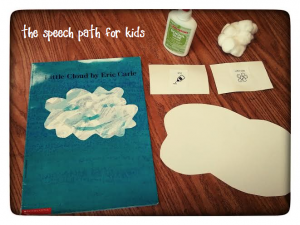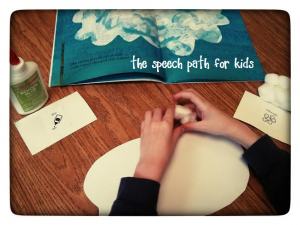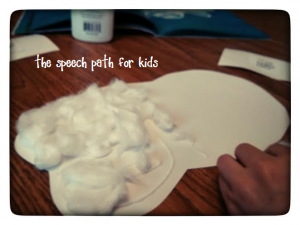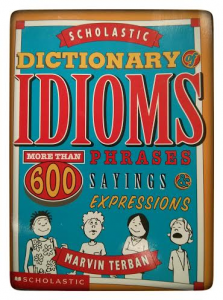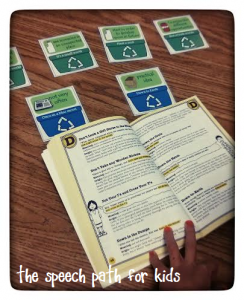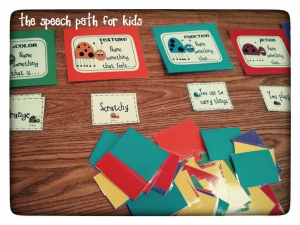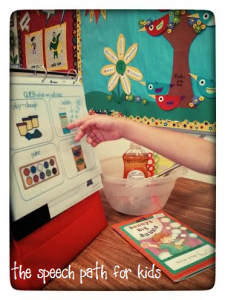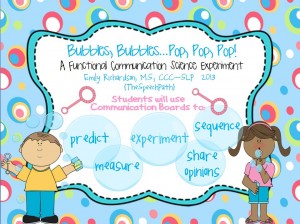There are some weeks that I carry one story or activity over most of my groups and differentiate based on levels, goals, and interests. Last week was not one of those! I had such a variety of lessons happening throughout the day.. Here’s a little peek at some things that have been keeping us busy.
We read “Little Cloud” by Eric Carle. I love this book because of its engaging illustrations, repeated text, and connections to basic vocabulary.
Throughout the story we talked about different shapes and designs that clouds can make. At the end we made our own. When I pulled out my bag of cotton balls I found some picture cues for cotton and glue… I love little surprises like that!
I got some fantastic communication out of this simple craft! My little guy is very sensitive to different textures so when I flattened his hand into the cotton balls and it became covered in glue that created a lot of spontaneous speech! We used vocabulary like “That’s sticky”, “stretch it out”, and “it feels soft”.
My 3rd-5th graders were wrapping up the idioms section from my Down to Earth: Idioms, Categories, and Descriptive Language lesson. I always have this Dictionary of Idioms book from Marvin Terban displayed in my room. It gives an example in a sentence, states the definition, and provides the origin of how the idiom was created.
My 5th graders we also doing an idioms unit in class and they brought up some of the idioms they learned in class. We referenced this book as we were working with their class idioms and our Earth Day idioms. The origin is my favorite part. It really helps my kids to make a connection when trying to remember the meaning of these expressions. For example, we read that when the thermometer was first invented, scientists discovered that the inside of a cucumber is 20 degrees cooler than the room temperature on the outside. Now the expression “cool as a cucumber” makes perfect sense!! I learn something new too!
I have a group that is a combo of articulation and language. We used this descriptive ladybugs activity and were able to target both sets of goals. We talked about what each descriptor meant (texture means how something feels, location describes a place, etc) and then brainstormed ideas for each question. For my artic kiddos, I added in a starter sentence based on the target articulation sounds. For example, R kiddos might say “I really wonder what feels…” and SH kiddos could say “I should share something that feels…”.
I also started this bubble making science experiment with some of my groups. The visual support is intended for functional communication groups. It really creates fun learning for all ages 🙂 I introduced it with the story Benny’s Big Bubble which I’ve had in my book bin forever. It has a great repeated story line with simple concepts and vocabulary.
The spontaneous communication that occurs when bubbles are around is unreal!! For more info on what this activity entails, check out my previous post. I’d love to hear what you have in store for Spring therapy!


